The Dirty Dozen and Clean 15 lists are released annually by the Environmental Working Group (EWG) to highlight the non-organic fruits and vegetables with the highest and lowest pesticide residues.
We have updated these lists every year for the past 12 years. Here are the lists for 2024.
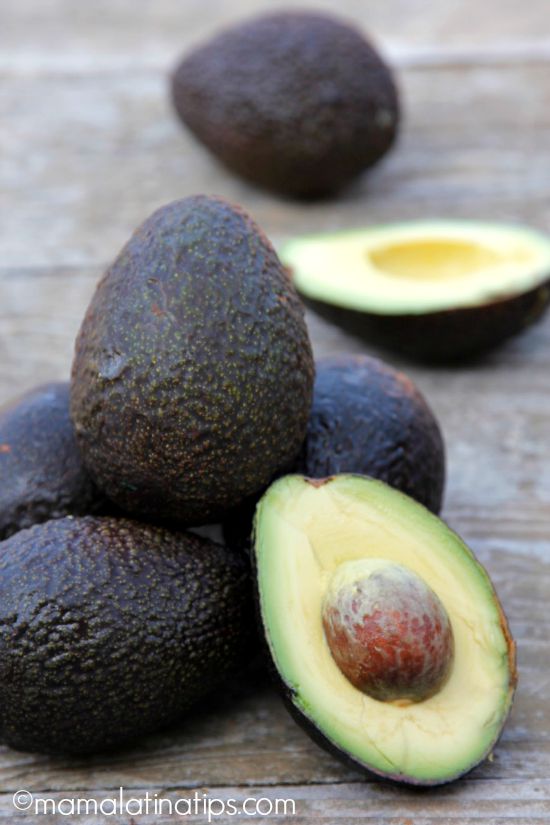
What are the Dirty Dozen and Clean Fifteen Lists?
The Dirty 12™ and Clean 15™ lists are annual publications from The Environmental Working Group (EWG) to inform consumers about fruit and vegetable pesticide exposure.
The information on these lists comes from the U.S. Department of Agriculture (USDA) and the Food and Drug Administration (FDA) data.
The EWG, a non-profit organization that aims to protect public health and the environment, recommends consuming produce from the Clean Fifteen list while choosing organic options for the items on the Dirty Dozen list to reduce exposure to harmful pesticides while still enjoying a varied diet of fresh fruits and vegetables.
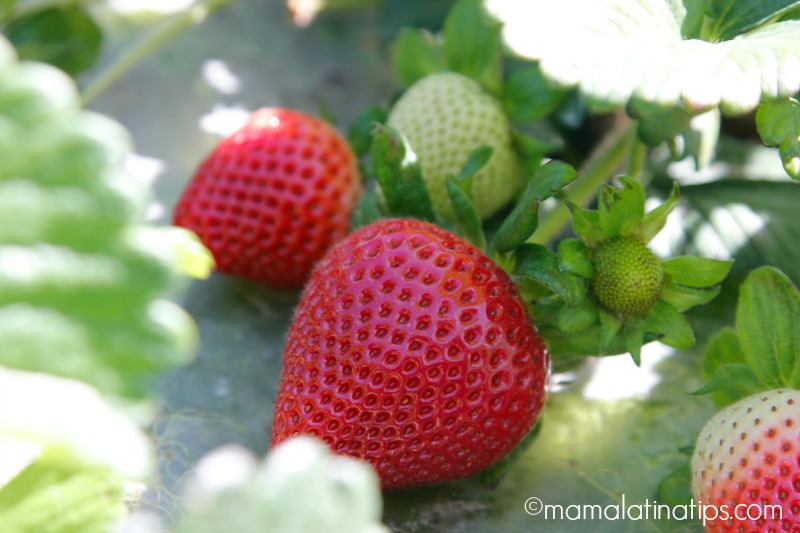
The EWG recommends everyone to eat fresh fruits and vegetables, whether organic or conventionally grown as, they say, “the health benefits outweigh the risks of pesticide exposure.”
The Dirty Dozen™ List 2024
This list includes 12 non-organic fruits and vegetables that are found to have the highest levels of pesticide residue, even after being washed and peeled. The EWG recommends choosing organic options for these items.
- Strawberries, try our strawberry agua fresca recipe.
- Spinach
- Kale, collard and mustard greens
- Grapes
- Peaches
- Pears
- Nectarines
- Apples, try our apple-ginger pie recipe.
- Bell and hot peppers
- Cherries
- Blueberries
- Green Beans
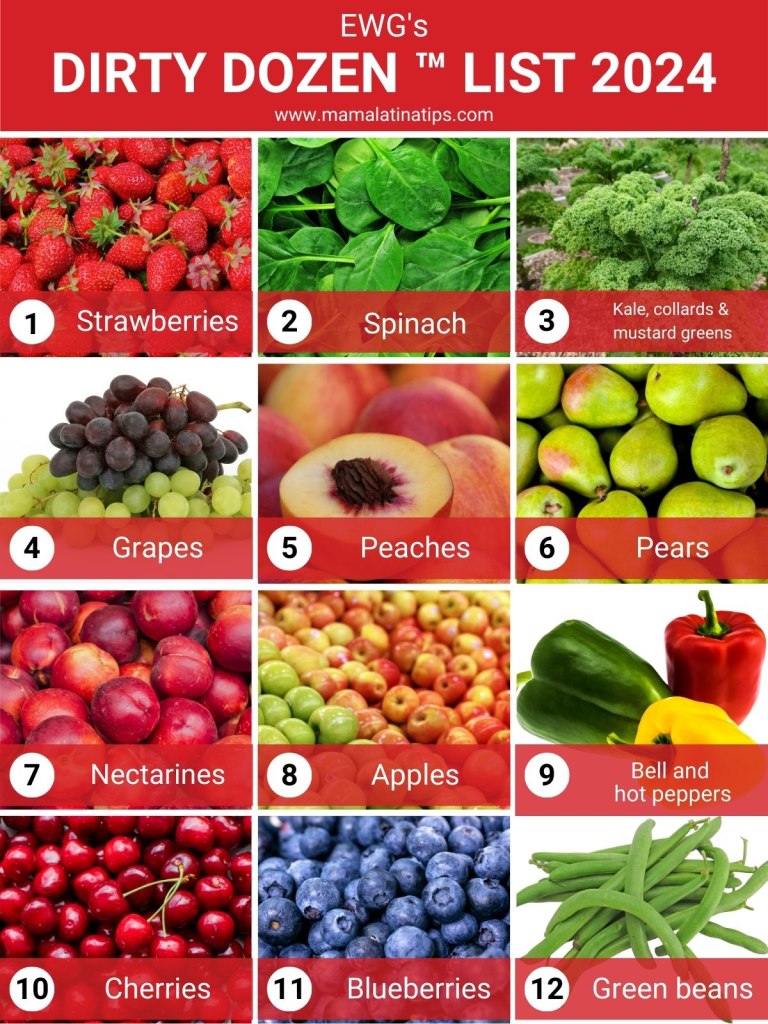
The Clean Fifteen™ List 2024
This list includes fruits and vegetables with the lowest levels of pesticides.
- Avocados, try our avocado salsa recipe
- Sweet corn*
- Pineapple
- Onions
- Papaya* try our papaya-coconut biónico recipe
- Sweet peas (frozen)
- Asparagus
- Honeydew melon
- Kiwi
- Cabbage
- Watermelon, try our watermelon agua fresca recipe.
- Mushrooms
- Mangos
- Sweet potatoes
- Carrots
* A small amount of sweet corn, papaya and summer squash sold in the United States is produced from genetically modified seeds. Buy organic varieties of these crops if you want to avoid genetically modified produce. See the whole list.
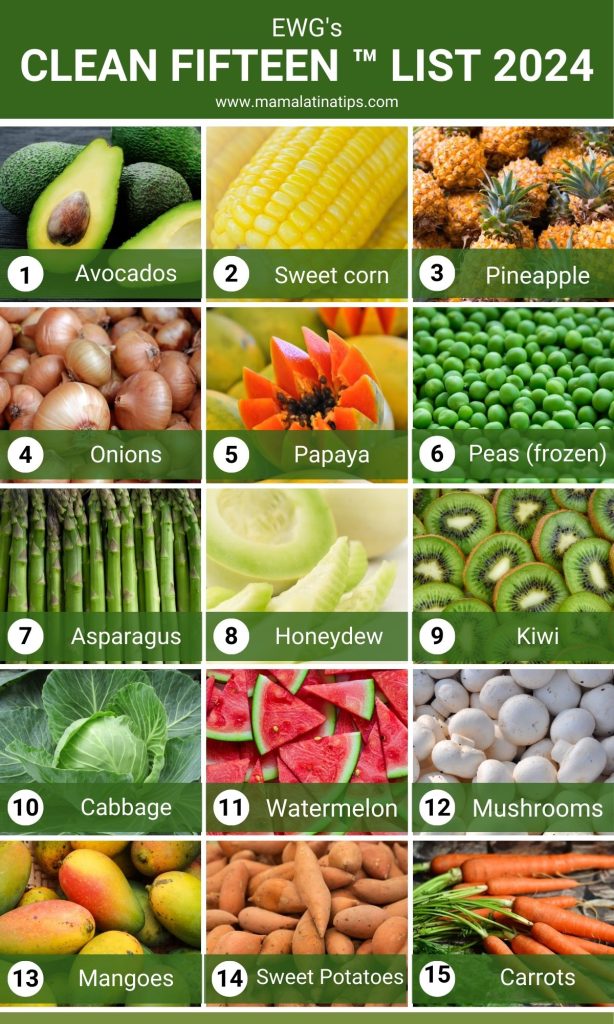
Other Fruit and Vegetables.
This list includes the fruits and vegetables in between Dirty Dozen and Clean Fifteen. Here it is in order of highest to lowest pesticide levels.
- Tomatoes
- Winter squash
- Cherry tomatoes
- Celery
- Lettuce
- Tangerines
- Cucumber
- Summer squash
- Broccoli
- Potatoes
- Plums
- Eggplant
- Raspberry
- Grapefruit
- Snap peas
- Oranges
- Cantaloupe
- Bananas
- Cauliflower
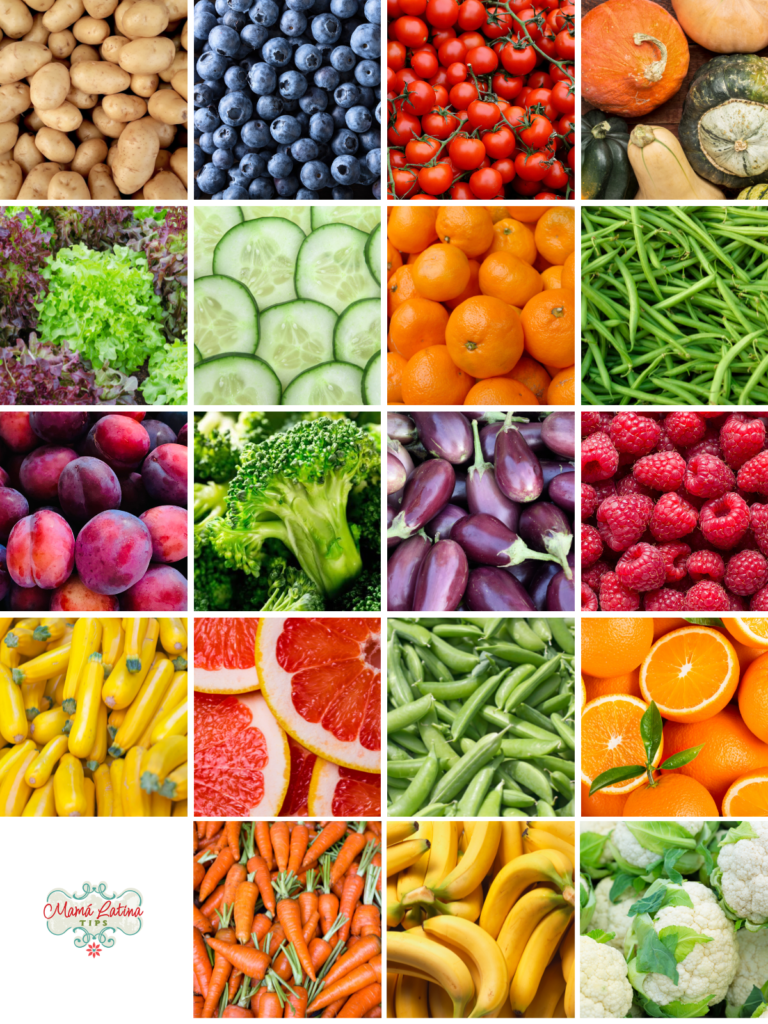
EWG’s 2024 Shopper’s Guide to Pesticides in Produce analyzes data from tests conducted by the Department of Agriculture and Food and Drug Administration on 47,510 samples of 46 fruits and vegetables.
For more detailed information please visit The EWG official website.
- Easy Mexican Flan Recipe (Crème Caramel) - February 26, 2024
- Easy Homemade Flour Tortilla Recipe - January 25, 2024
- 50+ Mexican Side Dishes and Drinks to Serve with Tamales - December 8, 2023










